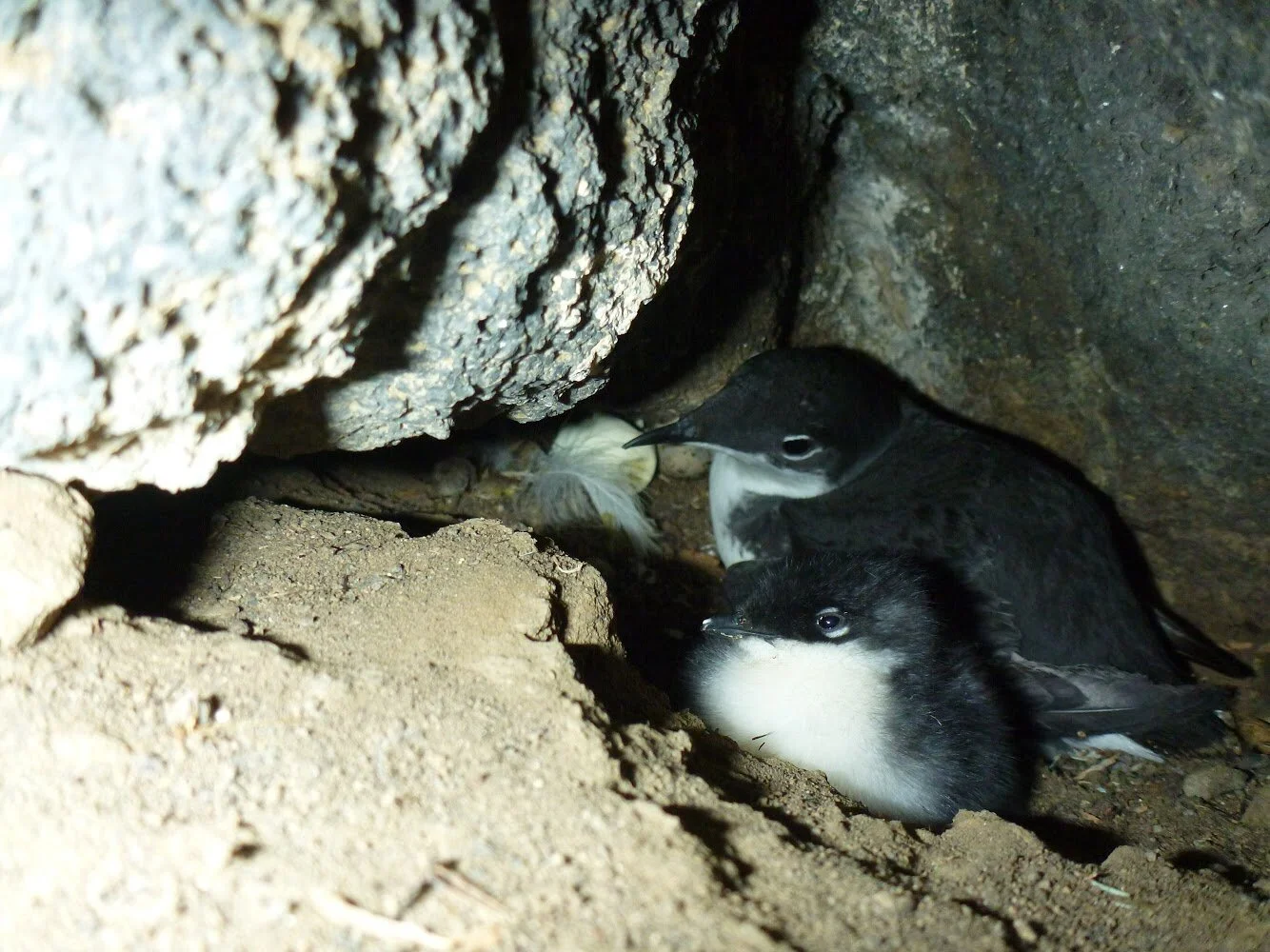Kevin Bishop builds machines that shoot lasers at brains to make them glow–a key part of 3D microscopes that scientists and doctors can use to look at individual brain cells. His goal is to use light to make tools to treat brain diseases like cancer and Alzheimer’s.
Read MoreChristine Baker, a graduate student in Civil and Environmental Engineering at the University of Washington, studies the movement of water by currents that are driven by breaking waves along the coast, specifically rip currents, which are hazardous for recreational swimmers. Using large-scale laboratory experiments, she seeks to understand when and how sand, pollutants, larvae, and unsuspecting swimmers move from the region where waves break to the open ocean.
Read MoreHannah Lewis is fascinated by how viruses hijack our cells to cause disease. She is a molecular biology PhD student at the University of Washington studying how Herpes Simplex Virus 1 manipulates proteins that package human DNA.
Read MoreHéctor Delgado Díaz is an astronomer and astrobiologist who is passionate about the search for extraterrestrial life. He studies the efficiency of each observation technique used to look at planets outside the solar system (exoplanets) and creates simulations of how the atmospheres of the exoplanets would look like through the lens of space telescopes.
Read MoreMichele Cadigan is a Ph.D. candidate of Sociology and NSF Graduate Fellow at the University of Washington. She studies the intersection of economic markets and the criminal justice system in the fight for racial justice. Her current work examines how states rewrite criminal laws and build markets for cannabis in ways that facilitate or hinder racial equity and justice.
Read MoreLucas Fifer is a graduate student and researcher in the University of Washington’s Department of Earth and Space Sciences, and Astrobiology Program. His research focus is on the subsurface ocean of Enceladus (a moon of Saturn), and whether this ocean could support extraterrestrial life.
Read MoreHalli Benasutti is a biochemistry graduate student at the University of Washington, where she works to develop therapeutics for a disease called muscular dystrophy. Muscular dystrophy is a result of mutations in DNA, which cause the gradual wasting away of patient’s muscles over time, affecting their ability to walk, talk, and even breathe.
Read MoreEllie James is a graduate student in Molecular Engineering who researches tau, a protein that takes on many shapes in healthy individuals, one shape in Alzheimer’s disease, and a unique shape in each other tau-related dementia. Her research will determine what causes tau into specific shapes in disease, which will improve our understanding of how to make medications for dementias.
Read MoreVictoria Rachleff is a Molecular & Cellular Biology Ph.D. student at the University of Washington. Melding her background in neuroscience and interest in virology, Rachleff uses clinical data and animal models to study viruses that infect the nervous system.
Read MoreShervin Sahba is a Physics Ph.D. student at the University of Washington. Shervin studies how to control the flow of light by forecasting its future state, merging methods from computational physics, photonics, and machine learning.
Read MoreAmelia J. DuVall spent the last several years getting pooped on while studying seabirds at Channel Islands National Park in southern California. Now a graduate student at the School of Aquatic and Fishery Sciences at the University of Washington, her research is on seabird ecology, conservation, and management across the Pacific Ocean, from the Channel Islands to French Polynesia.
Read MoreMolly Zych studies cell division in order to understand how human cells accurately separate DNA into two new daughter cells. Using microscopy and cell biology tools Molly hopes to understand why errors occur in this process and how they contribute to both developmental disorders and cancer advancement.
Read MoreNatalie Mastick is a Ph.D. student in Aquatic Sciences at UW and a Graduate Fellow with Oceans Initiative, and she studies how parasites affect marine mammals in Puget Sound. She uses historical ecology to figure out how parasite abundances in fish have changed over the course of the past century, and works to determine how parasitized the whales that eat those fish species are today using recently collected fecal samples.
Read MoreJenna Morris is an ecologist studying the ways forests respond to disturbances like fire and insect outbreaks. Her current research explores how management activities and bark beetle outbreaks interact to shape forests across western North America, with implications for improving our ability to maintain resilient forest structure and function in a changing climate.
Read MoreSara Keller is a fourth-year PhD student in Bioengineering working in the lab of Dr. Mike Averkiou. She studies the use of contrast-enhanced ultrasound for cancer diagnostics and therapy.
Read MoreMeghan Garrett is a PhD student in the Molecular and Cellular Biology program at UW. She studies the immune response against HIV in infected mothers in order to better understand antibodies that might have protected their infants from infection, with the goal of using this knowledge to improve HIV vaccine design.
Read MoreNIck Weber is a PhD candidate in the Department of Atmospheric Sciences. His research focus is long-term weather prediction, and how we might be able to improve forecasts with next-generation, high resolution global models.
Read MoreLaura Carlucci is a grad student in the Department of Bioengineering at the University of Washington. She is studying how mechanical forces affect binding between molecules and the mechanism behind a particularly force-resistant interaction found in nature.
Read MoreJiwoon Park is a PhD student in chemical oceanography. She studies organic molecules that are produced by marine microbes to efficiently take up metals (e.g. iron, cobalt) for growth, to understand how the production or consumption of organic molecules may affect metal availability and eventually the microbial population in the North Pacific Ocean.
Read MoreAndrew Shumway is an astrobiologist and planetary scientist who is fascinated by the role of water on Mars. His experiments simulate the cold, dry conditions of Mars’ surface to study how water forms in extreme environments.
Read More










